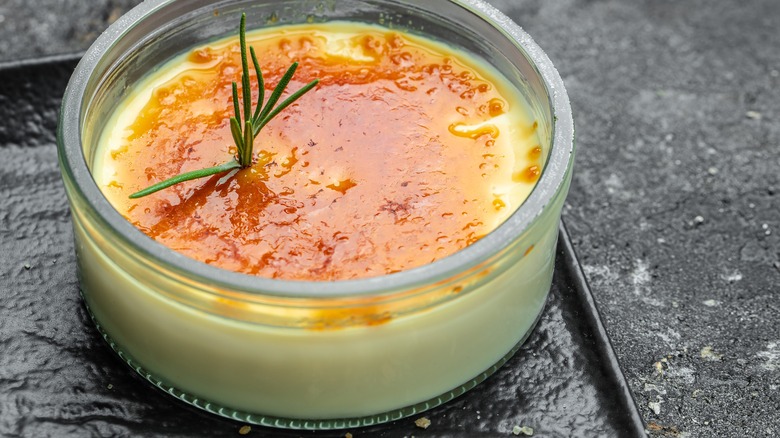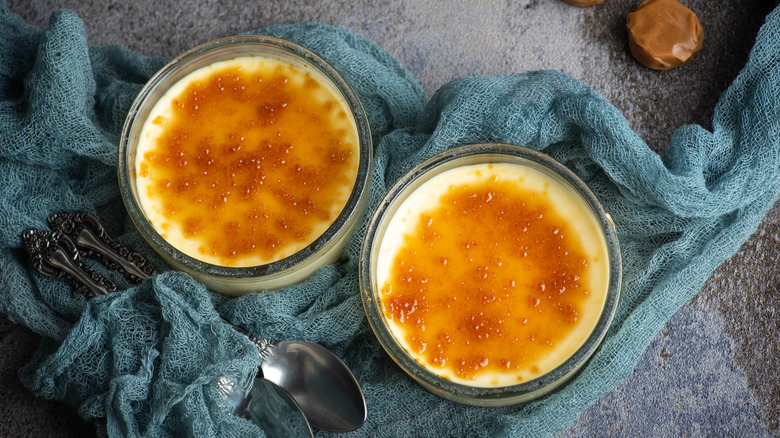No Blowtorch? Make Crème Brûlée With This Sugary Trick
Crème brûlée is one of the most iconic French sweets, right up there with pain au chocolat and macarons. Most recipes for this dish of baked custard topped with caramelized sugar consist of roughly a handful of ingredients, and they're often easy enough for beginner cooks to tackle. But a crème brûlée isn't exactly "brûléed" without a crisp caramelized crust on top. The word "brûlée" translates to "burned" after all. This important step is one part of the process that can pose a challenge for people new to the recipe.
Most commonly, chefs create the topping for a crème brûlée by using a blowtorch to melt granulated sugar on top of the set custard. Unfortunately, many home cooks might not have a blowtorch sitting around just to make one particular dessert. That's okay. You can still enjoy a beautiful crème brûlée by topping it with a thin layer of caramel you've prepared before you add it to the custard. It will set as it cools, giving your crème brûlée the same hardened sugary crunch you're looking for, and all you have to do is melt a little sugar on your stovetop. There are certainly other tips for making crème brûlée without a torch, but this is an easy one almost anybody can handle.
Tips for making your stovetop caramel
You've already executed your favorite crème brûlée recipe, minus the topping, and you've let the custard cool and fully set in the refrigerator for at least a few hours. Now, you plan to top your dessert with sugar you've caramelized on the stove. Here are some tips to ensure you end up with a thin and crisp cracking caramel instead of one of the more chewy varieties.
When making your caramel topping, you want to use medium-high heat so you can keep your eyes on the boiling sugar and prevent accidentally burning it. You're looking for a light golden color or, preferably, 300 and 310 degrees Fahrenheit. Below 300 degrees, you'll be entering soft toffee territory, and too far above 310 degrees, you'll create a burnt sticky mess that won't give you any crispness at all. If you pour a very thin layer of caramel, it will be easier to crack into. If you're worried about over-pouring, try using a spoon to add just a small amount at a time. You can also pour caramel disks on parchment paper or a silicone baking mat and top your crème brûlée with them after the caramel has set. Even if they break when you take them off the sheets, they'll still give your dessert the sweet crunch you're looking for.

